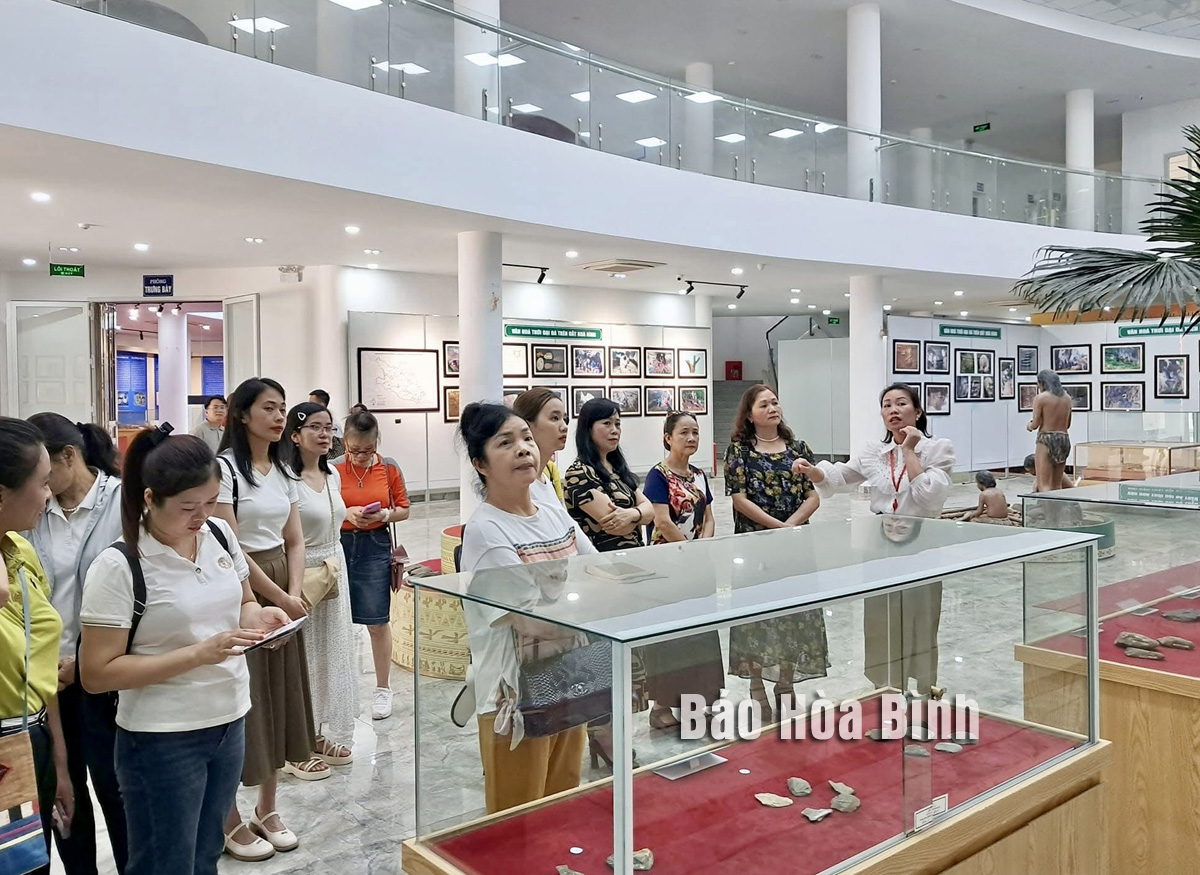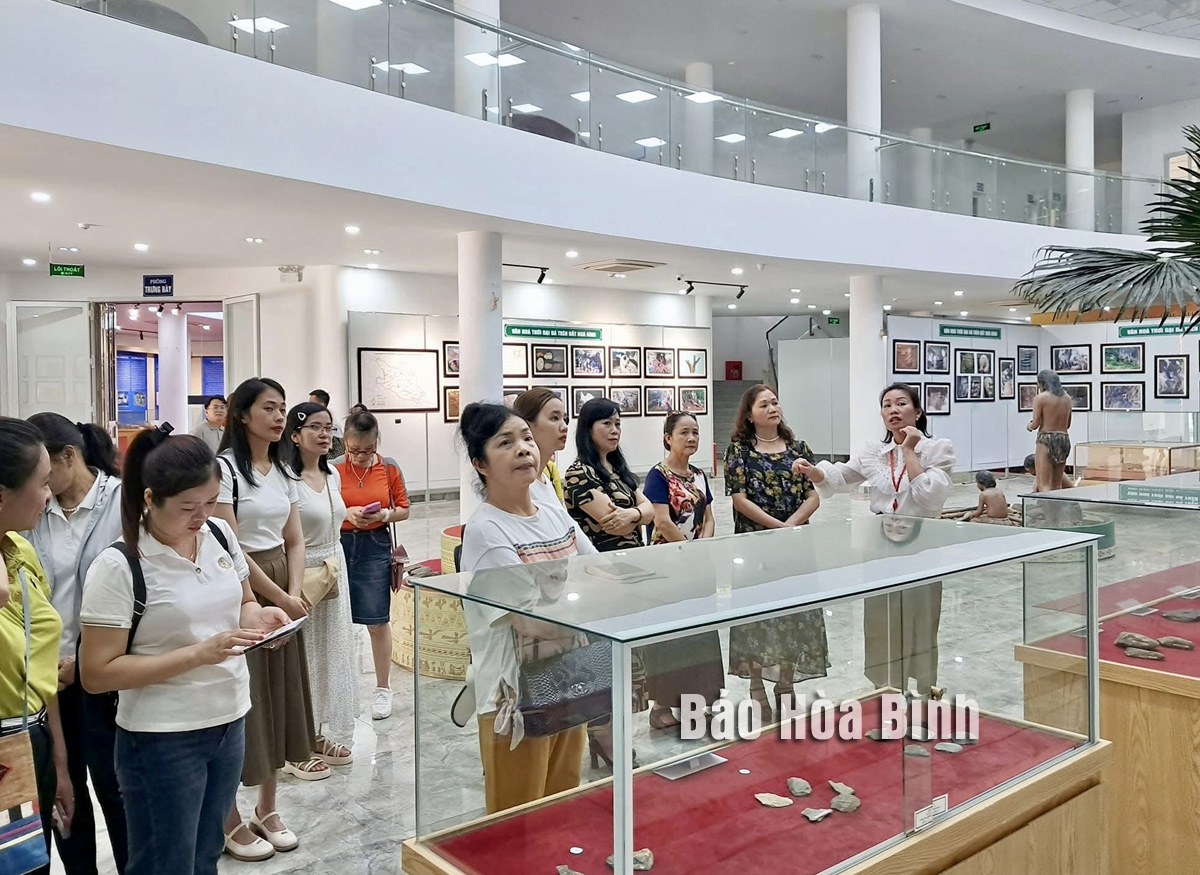
From 2020 to 2024, the system of cultural and sports institutions across Hoa Binh province has seen steady investment and improvement. With increasingly diverse forms of operation, these facilities have played a significant role in enriching spiritual life and fostering a healthy cultural environment in the locality.

The Hoa Binh Museum houses thousands
of valuable documents and artefacts on the province’s history and culture,
drawing in a considerable number of visitors.
At the provincial level, the cultural and sports
infrastructure includes a centre for culture and cinema, a library, museum,
stadium, sports hall, swimming pool, and mountain biking track. The centre
covers 9,000 square metres and features fully equipped functional rooms and
supporting facilities. The museum, spanning 1,800 square metres, is home to
numerous valuable items. The library, occupying 1,554 square metres, currently
holds 42,572 book titles and 27 periodicals, serving over 32,000 readers
annually.
At district level, all 10 districts and cities in the
province are equipped with a cultural house and stadium; four districts also
have multi-purpose sports halls. Among communes and towns, 105 out of 151
(69.5%) have cultural houses meeting the Ministry of Culture, Sports and
Tourism’s standards, and 92 (60.9%) have sports grounds or athletic facilities.
At the grassroots level, 1,448 villages, hamlets and residential
areas – representing a rate of 97.7% – have cultural houses, while 77.5% are
equipped with sports grounds.
It is estimated that between 2020 and 2024, the
provincial-level cultural and sports institutions hosted or co-hosted over 70
annual events, including festivals, competitions, performances, and sports
tournaments. Hundreds of similar events have taken place at district level and
thousands more at commune level, attracting broad public participation across
all walks of life.
According to Quach Thi Kieu, Director of the provincial
Department of Culture, Sports and Tourism, cultural and sports institutions at
all levels are being managed and operated in accordance with legal regulations.
Their activities remain closely aligned with assigned functions and
responsibilities, meeting both the political service requirements and locals’
recreational needs.
Once lacking recreational spaces and community facilities, Residential Group 2 in Quynh Lam Ward (Hoa Binh City) has recently received attention for the construction of a new, spacious, and fully equipped cultural house. The project followed the model of state support combined with public contributions in both labor and funding.
The "All people unite to build cultural life" movement, which has been effectively integrated with Kim Boi district’s socio-economic development goals, is fostering a lively spirit of emulation across local residential areas, hamlets, villages, public agencies, and enterprises. In addition, through the initiative, traditional cultural values are being preserved and promoted, while community solidarity and mutual support in poverty reduction and economic development are being strengthened.
A working delegation of the Hoa Binh provincial People’s Committee led by its Permanent Vice Chairman Nguyen Van Toan on June 11 inspected the progress of a project to build the Mo Muong Cultural Heritage Conservation Space linked to tourism services in Hop Phong commune, Cao Phong district.
Born and growing in the heroic land of Muong Dong, Dinh Thi Kieu Dung, a resident in Bo town of Kim Boi district, in her childhood was nurtured by the sweet lullabies of her grandmother and mother. These melodies deeply imprinted on her soul, becoming an inseparable part of her love for her ethnic group's culture. For over 20 years, this love for her hometown has driven Dung to research, collect, and pass down the cultural values of the Muong people to future generations.
In the final days of May, the Ethnic Art Troupe of Hoa Binh Province organized performances to serve the people in remote, mountainous, and particularly disadvantaged areas within the province. These were not just ordinary artistic shows, but they were the meaningful journeys aimed at spreading cultural values, enhancing the spiritual life of the people and contributing to the preservation of ethnic minority cultural identities.



